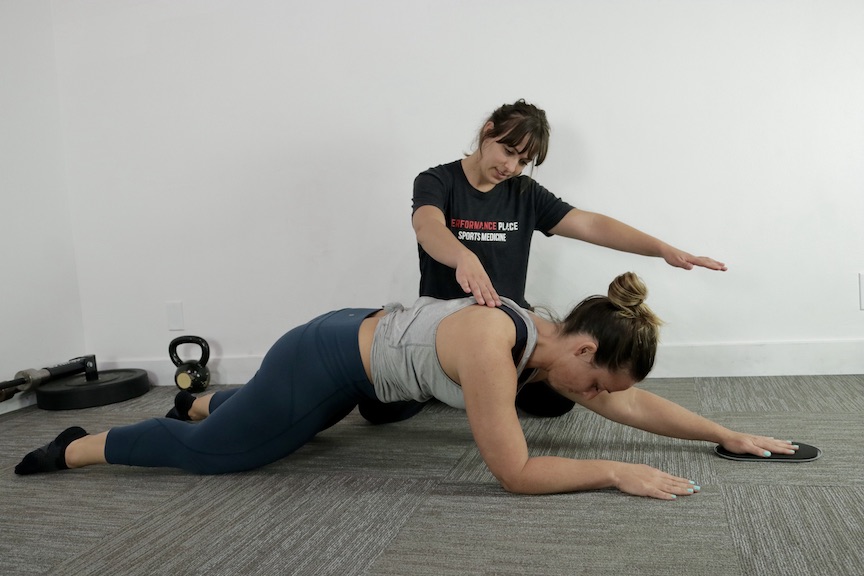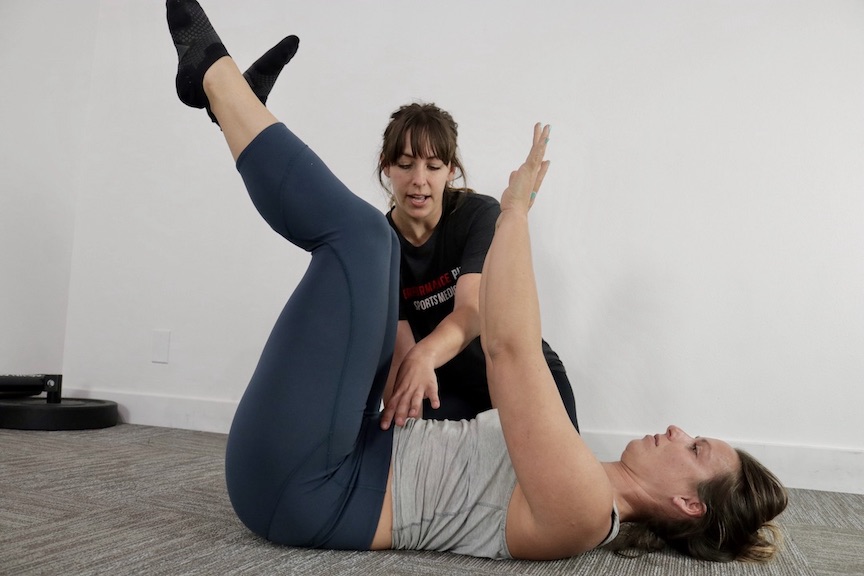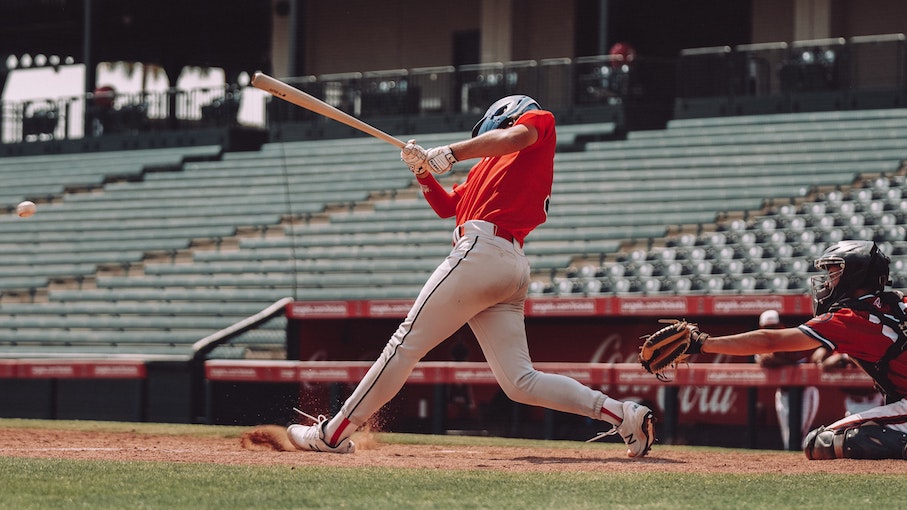This is my personal experience with my oblique strain (and my treatment)
In this all-new guide you’ll learn:
- Signs and Symptoms of an Oblique Strain
- Rehabilitation Program for my Oblique Strain
- How To Diagnose an Oblique Strain
- Week by Week Improvement Expectations
Note: read the disclaimer and always see a doctor first. If you need some help virtually (or in-person) the “Locally World Famous Chiropractors®” at Performance Place Sports Care are ready to work with you!
Let’s get started.
Oblique Strain: A Personal Patient Perspective
What Is An Oblique Strain?
An oblique strain, AKA a side strain injury, is when one of the abdominal muscles (internal or external oblique muscles) becomes frayed, torn or detached. Often times from the lower four ribs, it is painful to breath, cough and laugh. This is treatable, with recovery ranging from weeks to months with the correct treatment plan.
The last thing I’ve ever wanted to do was write up my own experience with a sports related injury, but alas, here I am!
Many of you may know that I play baseball; I’m an avid baseball player, so I train as a baseball player.
Surely, with my knowledge and experience, I was training adequately to avoid injury, right? Wrong!
I learned a very hard and painful (not to mention scary) lesson about having an oblique strain. It was such a learning process for me that I felt compelled to share it with you.
I’ll start by saying it was extremely frustrating not being able to find ANYONE who could help me through this horrible injury.
Fortunately, my job is to provide others with the rehab/therapy for their condition; the sad thing was that I’ve NEVER treated anyone with an oblique strain. I was the first case for me!
I was forced to experiment on myself using available research on abdominal wall injuries. Long story short, I overcame the oblique strain to play baseball again and still play today.
I can run as fast as I want, throw as hard as I want and most importantly, I can sneeze again!
To not forget how this condition felt, I wrote this article about my recovery. I hope it assists you mentally and physically through any issues you’re having.
A Gameplan for Oblique Strains
Since writing this article (over the last 4+ years), I’ve received countless emails from people around the world who’ve experienced the same type of pain, and not knowing what it was or how to fix (rehab) it.
That’s why I created an 8 week oblique rehab video course to better assist those of you who’ve reached out to me but can’t come into my office because you’re not local. It shows you how to overcome your oblique strain over the course of 8 weeks. It’s not only tried and true – because I went through it successfully – but it’s stuff you can do on your own.
(For a limited time, use coupon code BREATHE50 to save $50 towards your recovery with this web guide!)
The rest of this article will shed light into some of the workouts you’ll find in this course.
Week 1 Pain and Debilitation
Any baseball fan can tell you that an oblique strain puts you on the Disabled List for at least 15 days if not more. As an athlete, I’ve had many injuries: a grade 2 hamstring tear, a rotator cuff strain, back pain, and cuboid syndrome.
So I can tell you from personal experience that an oblique strain is more debilitating than ALL of them. An injury to your core musculature makes it nearly impossible to do anything without pain.
You don’t realize how much you use your core in daily life until it hurts to use it.
Without being exhaustive, here is a list of things that caused me pain in week 1 of my oblique strain:
– Putting on shoes
– Getting into my car
– Pressing the brake pedal in my car
– Sitting up
– Rolling over
– Leaning to one side
– Running
– Walking
– Laughing
– Going to the bathroom (mostly #2…I know, but it’s a daily thing!)
– And most of all….sneezing!
Sneezing made me feel like I was going to explode! It literally brought me to my knees.
Diagnosing My Oblique Strain
I’m an outfielder. In the first inning, I had to dive for a ball coming directly over my head.
I caught it (of course), but over stretched my left side in the process. Over the next few innings, I could feel something a bit off on that side, just under the last rib as I was rounding the bases.
Everything seemed OK until the 7th inning. Up to bat, I swung and missed; that’s when I felt a “pop” and had intense pain.
Worried and confused, I looked over at the batter on deck wondering if I should continue? Despite the pain, I hung in there attempting to bunt despite a two strike count. After my at bat was over, I had to lay on my back behind the dugout.
Desperate to brace my core and stop the pain, I realized it was too late. I’d really hurt myself! I knew it was bad when I couldn’t even roll over to watch a play.
My mind started racing. How bad is my injury? Can I play next week? Can I play again ever? What if I have to sneeze?!
In all seriousness, I was really concerned about getting sick. Forget about baseball! I knew I had to fly out for a trip in a few days and dreaded the idea of being crammed up in a plane, ripe with contagion.
So when I boarded the plane, I opted to disinfect my seat in order to not be the “weird guy” wearing the SARS mask for the entire flight. I was desperate…that’s how painful a sneeze was!
I know, I’m digressing, but sneezing really was excruciating! Anyway, it took me about five days come out of the haze of my shock and disbelief and into a clear realization that I’d really, seriously injured myself.
Only then did I begin to think logically about what was going on.
Is this an oblique strain or a large tear?
Did I fracture a rib?
What the heck else could it be?
I decided I needed some imaging. I sought out Mike Jablon, a great Musculoskeletal (MSK) Ultrasound Sonographer. I knew he was the go-to guy as he’d helped me learn to use and read MSK Ultrasounds.
For those not familiar with MSK, it’s an ultrasound (just like those used in pregnancy) that is designed specifically for visualization of muscles and tendons. It’s a great cost alternative to MRI for those of you, like me, who may not have great insurance coverage. It’s very accurate when used correctly. Lastly, it was sitting right there in my office and would let me personally review my result!
Sure enough, the MSK Ultrasound led Mike to pronounce my diagnosis: an oblique strain with a small avulsion of the rib.
So there I had it.
Oddly, I wasn’t bummed. I became focused.
I knew I was going to get better and my intestines were staying put. Having a diagnosis of oblique strain gave me back a measure of power and control…I knew what my problem was and how I was going to fix it!
My Oblique Strain Recovery Plan
My first order of business was to start loading up on vitamin C; I wasn’t going to get sick (I’m really serious about the sneezing pain). Then I rested. My plan was simple. Sit tight for 3 weeks then attempt some rehab.
During that time, I didn’t workout or play baseball. I did get proactive about my injury. I knew I needed some stabilization of my core. If you check my Instagram feed (@PerformanceHB) during that time, you’ll see that I taped up the area to limit motion.
My specific goal was to limit my lateral flexion and extension.
I didn’t want to create more damage. I used Leukotape because it’s more resistant to stretching as opposed to Rock Tape and KT Tape.
From my medial training, I knew when to attempt my first workout.
Most soft tissue injuries normally have the ability to carry some load after three weeks.
Apprehensively, that’s when I attempted my first workout at a CrossFit near my home. To my relief, I was actually finally able to perform sagittal plane motion under a light load!! The sagittal plane is like a hip hinge or squat, but not a full baseball swing. I had a long way to go, but this was an encouraging start!
Here is my first workout lifting post oblique strain:
- Isometric abdominal work as a warm-up
- Concept 2 rowing at 50% effort for 1000 meters
- Barbell hip thrusters 65lbs for reps
- Bulgarian split squat 26lbs for reps
- Front squats at 85lbs for reps
I had no pain at all doing this workout!
But, I still couldn’t sneeze!!
This brings me to an important concept in rehabbing an oblique strain (or any soft tissue injury):
If you know what you’re doing in the gym, start to test and learn what you can tolerate post injury. If you don’t know what you’re doing, then get with someone who does and get back to being active at the appropriate time.
Before that, be proactive in week 1 about your oblique strain. Seek out a sport injury specialist that can accurately diagnose you with ultrasound, recommend and demonstrate taping for your core and start you with activities you can still do like planks, etc.
It took one more week for me to not have pain with sneezing (finally!), but I did end up getting sick with a cough at that point. It was a nagging cough that even woke me up at night, so I opted for a week off of training to recover.
At week 5, I attempted swimming, which was a little uncomfortable the first few laps, but I was able to work through it. I also began a TRX Rip Trainer for some isometric rotational training before I picked up a bat again.
So, after a total of 6 weeks post oblique strain, I was finally able to swing a bat again!
You wouldn’t imagine the fear of swinging a bat until you do so after an injury. I actually slapped liners to right field for a few games before I even attempted to hit an inside pitch. I don’t think the pitchers ever caught on, but I was letting everything middle in go right by!
I tried to make this “restricted hitting” time productive. I worked on picking my pitches and oppos. Hell, I even worked on push bunting… why not.
At 9 weeks, I decided I was NEVER going to have an oblique strain again. I began adding more days of rotational and lateral motion into my training regimen. I realized that for 6 months prior to my injury, I’d only been doing front and back squats, deadlifts and cleans.
This routine was sorely lacking for the core demands of a rotational athlete, and I had just simply lost sight of my own training needs!
Results and Conclusion
Today, well over a year later, and well into my next baseball season, I can honestly say that I don’t have any discomfort from my oblique strain.
I have stepped up my training, adding even more lateral motion power and rotational moves to prep my muscles and tendons for the quick action needed to smash the baseball.
And interestingly at the office, I ‘ve had quite a few oblique strains come through the doors in the past 6 months!
I hope my sharing this story has given you some insight into what it’s like to have an oblique strain. It’s the type of injury that can literally make you question if it’s “the end”.
Despite my extensive sports medicine knowledge, I still had quite a lot of fear and doubt about my recovery. I can only imagine what the average athlete goes through with this injury!
It has certainly provided me with precious insight of what it’s like on the other side of the table, and more importantly, it’s given me powerful knowledge to be able to empathize with and take better care of my patients with an oblique strain.
If you’re dealing with an oblique strain and you don’t live in Southern California, you should look at my video course. I find that most people just need a game plan of what to do as it heals. Watch the course preview video to get a really good idea of what to do (it’s the video at the top of this article, but you can also find it HERE.)
Good luck!
Dr. Sebastian Gonzales DC, DACBSP®, CSCS
Live in Southern California? Come see me in person!
How long does it take for a torn oblique muscle to heal?
A torn oblique muscle recovery time varies depending upon the severity and your activity level during your recovery. Most strains can recover in 5-10 days, while more severe injuries can take 1-2 months. We have spoken to people who have suffered from pain associated with a torn oblique muscle that has lasted upwards of a year.
You can delay your recovery by “picking the scab.” Stretching the oblique muscle or too much activity too soon can increase recovery time. Be sure to have a complete examination by a qualified medical professional to see what you can and can’t do at this stage in your recovery.
If you’re in California, set up your first session with us here.

How do you treat a torn oblique muscle?
Google searches show that most people treat a torn oblique with a combination of cold, heat, over-the-counter painkillers, compression, rest, and general exercise.
I’ve recovered from a torn oblique muscle, and I agree with only some of these treatment suggestions.
Ice and rest are acceptable for the first five days, yet using them beyond that can decondition your body and prolong recovery.
Walking (when it is tolerable) is one of the best things to do. Walking often doesn’t stretch on the torn area and can help “lubricate” other body joints that will help your recovery move forward.
Luekotape or a movement check tape job can help keep you out of the ranges of motion that can “pick the scab” and delay your recovery. Taping is a great way to keep moving while keeping the torn region out of a stretch position, triggering pain.
Exercise can be helpful, but exercise should be used for a specific purpose, like medication. Some corrective exercises can significantly reduce pain, while others may induce more hurt.
A rehabilitation professional with experience in working with athletes with a torn oblique muscle is best. Corrective exercises can often be implemented as early as a week after the injury occurred.


